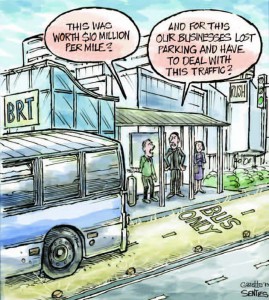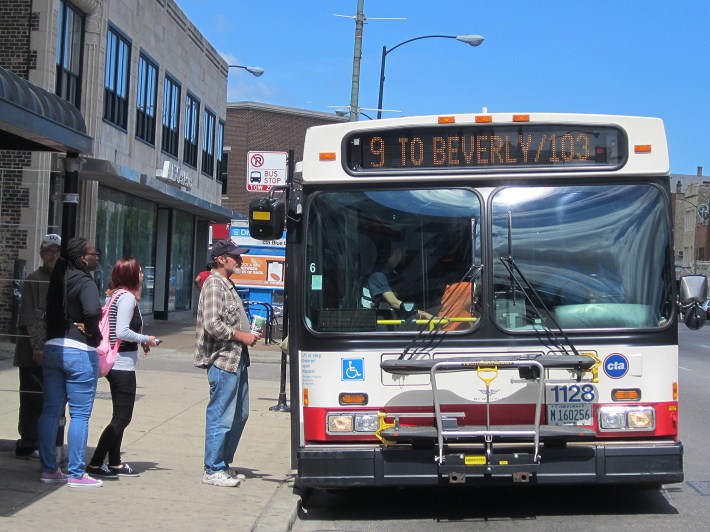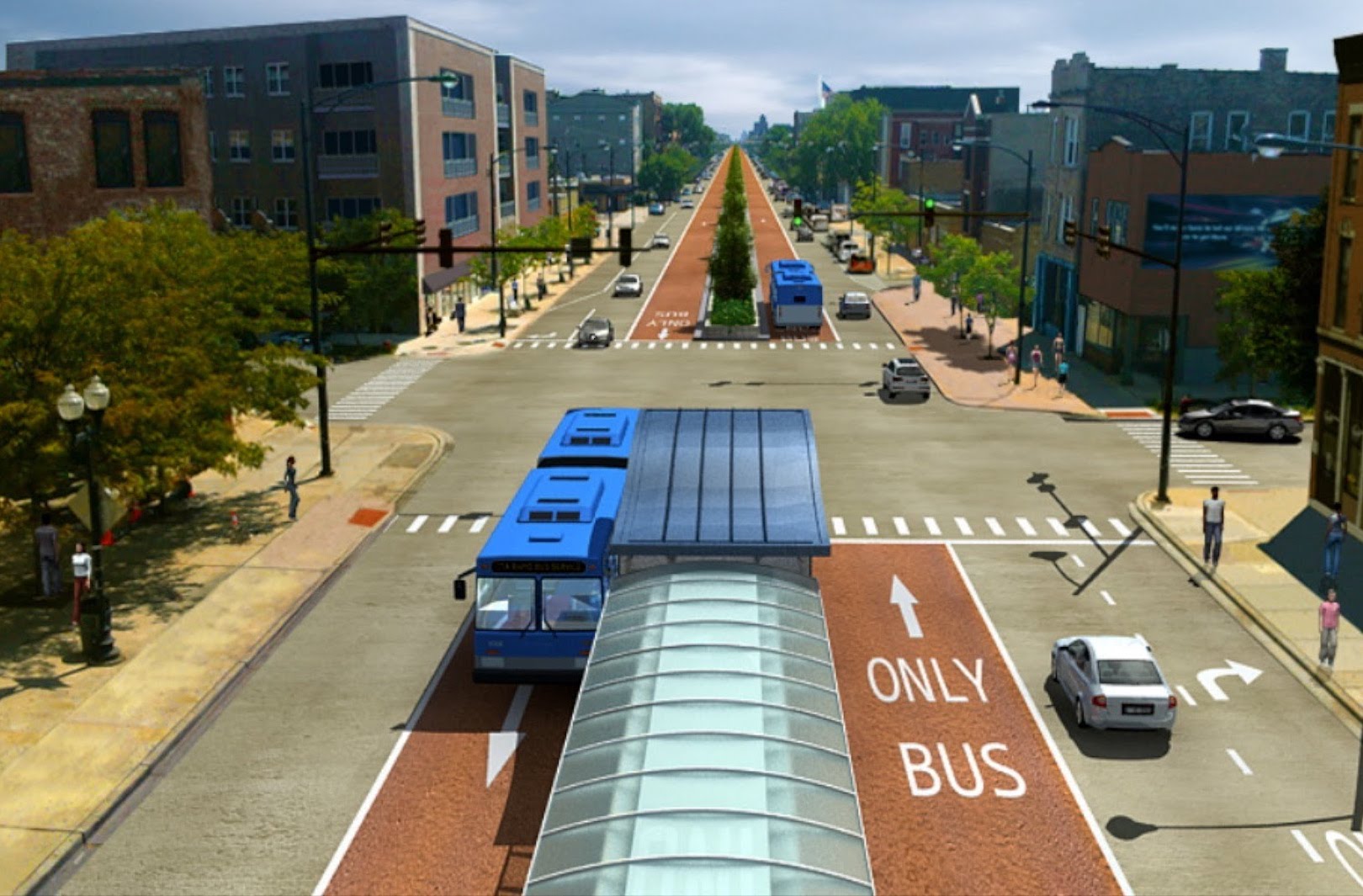Here at Streetsblog Chicago, we make no bones about being advocates for safe, efficient, and equitable transportation. In contrast, the Gazette Chicago community newspaper claims to “tell all sides of the story in our unbiased news coverage.” But in reality the paper has shown a strong pro-driving bias in its coverage of the city’s Ashland Avenue bus rapid transit proposal. An update on the project published today by reporter Susan S. Stevens was essentially an anti-BRT op-ed masquerading as a news story.
The project, announced in spring 2013, would have converted the two center lanes of four-lane Ashland to center-running BRT between 95th Street and Irving Park Road. Thanks to time-saving features like car-free lanes; limited stops; prepaid, level, all-door boarding; and transit signal priority, the CTA estimated that the route would nearly double current bus speeds from 8.7 to 15.9 mph, including stops, which is comparable to the ‘L’. Meanwhile, the agency predicted that average car speeds on Ashland would only be reduced by ten percent, from 18.3 to 16.5 mph.

There was a strong backlash to the proposal from some residents and business owners, led by the Fulton Market Association’s Romanelli, who argued that the lane conversions, along with the prohibition of most left turns from Ashland, would lead carmageddon. In the face of this stiff opposition, the city indefinitely shelved the plan a couple of years ago.
In today’s piece Stevens reassures motorists and merchants that Ashland isn’t getting the major transit improvements. (The city did recently implement transit-friendly signal timing on Ashland and reintroduced express service, but these relatively minor changes don’t appear to be having a dramatic impact on bus travel times.) “Shoppers, shopkeepers, and residents can rest assured [emphasis added] that the middles of Ashland and Western Avenues will not become dedicated to buses any time in the foreseeable future,” she writes.
Stevens looked into the issue after anti-BRT types were alarmed by Mayor Rahm Emanuel’s June 22 announcement that the city would conduct a six-month study of whether to expand Chicago’s transit-oriented development ordinance to include high-ridership bus corridors, including Ashland, Western, Chicago Avenue, and 79th. Within TOD zones, on-site car parking requirements for new developments are essentially eliminated.
To make sure the Ashland BRT proposal isn’t still in the works, Stevens checked in with aldermen Daniel Solis (25th) and Jason Ervin (28th) who told her they haven’t heard of any movement on the project, and that it seems to be dead in the water.
She also talked to Romanelli and fellow BRT naysayer Charles Paidock from the grassroots group Citizens Taking Action, who also said they haven’t heard any news about Ashland BRT, and that it appears to be going nowhere. “It took a ton of hard work to win that issue,” Romanelli boasted.
For some reason Stevens also contacted former Chicago police chief and mayoral candidate Garry McCarthy for his opinion on the issue. Via a spokesperson McCarthy called the BRT proposal an example of Emanuel “rolling out shiny objects… at the expense of taxpayers.” The 16-mile rapid bus corridor is estimated to cost $160 million. By comparison, the car-centric Jayne Byrne Interchange project, currently underway in the west loop, is costing taxpayers $600 million.

Conspicuously absent from Stevens’ supposed attempt to “tell all sides of the story” is the pro-BRT viewpoint. She writes that the mayor’s office, the CTA, and other leaders declined to comment (the CTA didn’t provide a comment to me by press time either.) But apparently she didn’t bother to contact Chicago's leading transit advocacy organizations for their perspectives, so I’ve done it for her.
Metropolitan Planning Council director of transportation Audrey Wennink argued that the city shouldn’t give up on the project, but should go back to the drawing board and “re-evaluate design options to see if different approaches to BRT on Ashland can work better for everyone." She noted that it’s a pressing issue because Ashland buses have carried the highest ridership of any bus route in Chicago for the past five years straight – more than 8 million people per year, serving economically diverse communities and connecting with many rail routes. “Meanwhile, bus speeds throughout the city continue to decrease due to traffic congestion.”
Active Transportation Alliance director of governmental relations Kyle Whitehead echoed Wennink’s sentiments. “The city should continue to look at ways improve bus speed and reliability on Ashland and other high-ridership routes across the city, as we called for in our recent Back on the Bus report,” he said via email. “More transit signal priority, faster boarding (pre-paid and all-door), and dedicated lanes would get more people riding transit and make the road safer for everyone.”
Whitehead noted that the reinstated Ashland express bus service alone does little to address bus bunching and congestion-related slow zones. “Thousands of people rely on the Ashland bus to get to work, school, healthcare centers, and other critical services every day,” he noted. “These riders deserve better.”






